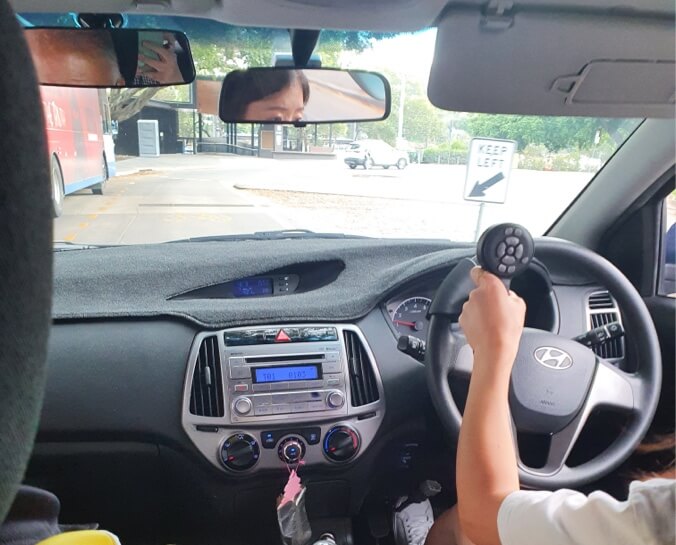
For most people, driving or access to a vehicle allows them to get to work, to the shops, to the doctor, to visit the family, to drop the kids at school, to go on holidays. From a young age, driving and/or access into a vehicle gives people freedom, independence and control over their lives.
Drivers must realise that driving is indeed a privilege and comes with responsibilities; the ability to drive may be affected by functional changes resulting from ageing, illness, disability and injury.
At Driving Well Occupational Therapy, we work with people that have an injury or medical condition that may be impacting on their ability to drive safely or access a vehicle.
Driving with a medical condition or disability
The law in Queensland states that “any person with a medical condition or disability that may affect their ability to drive, must have medical clearance from their doctor. In cases where therfe is concern regarding learning ability or a physical impairment, the person will need to have an Occupational Therapy driving assessment.”
This law is called Jet’s Law”, named for Jet Rowland who in 2004 was 2 years old and involved in an accident, where the driver of the other vehicle had epilepsy and shouldn’t have been driving. Jet was killed, his older brother had a catastrophic spinal cord injury and uses a wheelchair, and their mother Anita (a Police Officer) sustained serious orthopaedic injuries.
When a GP is unsure about the person’s ability to drive or the functional impact of the medical condition or disability on driving, they can refer for an Occupational Therapy Driving Assessment. This must be completed by an Occupational Therapist with the additional post-graduate driver assessor qualification.
After an OT driving assessment, the OT will make a recommendation back to the GP in a formal report, and then the GP makes the final decision about the persons medical fitness for driving. To continue driving, the GP writes a new QLD Transport Medical Certificate for the person to take to the QLD Transport office for processing; an updated licence is then provided.
There are extremely serious consequences of driving with a medical condition when the proper clearance and reporting is not completed:
- In the case of an accident, insurance is voided
- Significant fine (in excess of $10000)
- Potential criminal charges – prosecution
- Putting themselves and others in danger
For further information:
https://www.qld.gov.au/transport/licensing/update/medical
Driving with a medical condition or disability?
"*" indicates required fields
- Resources
- Insights
- Forms
- Driver Focus App
Driving Well Occupational Therapy is a busy practice that provides OT driving assessment and vehicle modification services for people with medical conditions and injuries in Brisbane, Ipswich and northern Gold Coast. We service clients who are self-funding, NDIS and other compensable (WorkCover, NIISQ, TAC, iCare).
On behalf of the team at Driving Well Occupational Therapy and in the spirit of reconciliation, I acknowledge the Traditional Custodians of Turrbul and Yuggera country, where our team live and serve the majority of our clients, as well as to all Traditional Custodians of country throughout Australia and their connections to the land, sea and community. I pay my respects to Elders past and present, and extend that respect to all First Nations people today.
On behalf of the team at Driving Well Occupational Therapy and in the spirit of reconciliation, I acknowledge the Traditional Custodians of Turrbul and Yuggera country, where our team live and serve the majority of our clients, as well as to all Traditional Custodians of country throughout Australia and their connections to the land, sea and community. I pay my respects to Elders past and present, and extend that respect to all First Nations people today.
